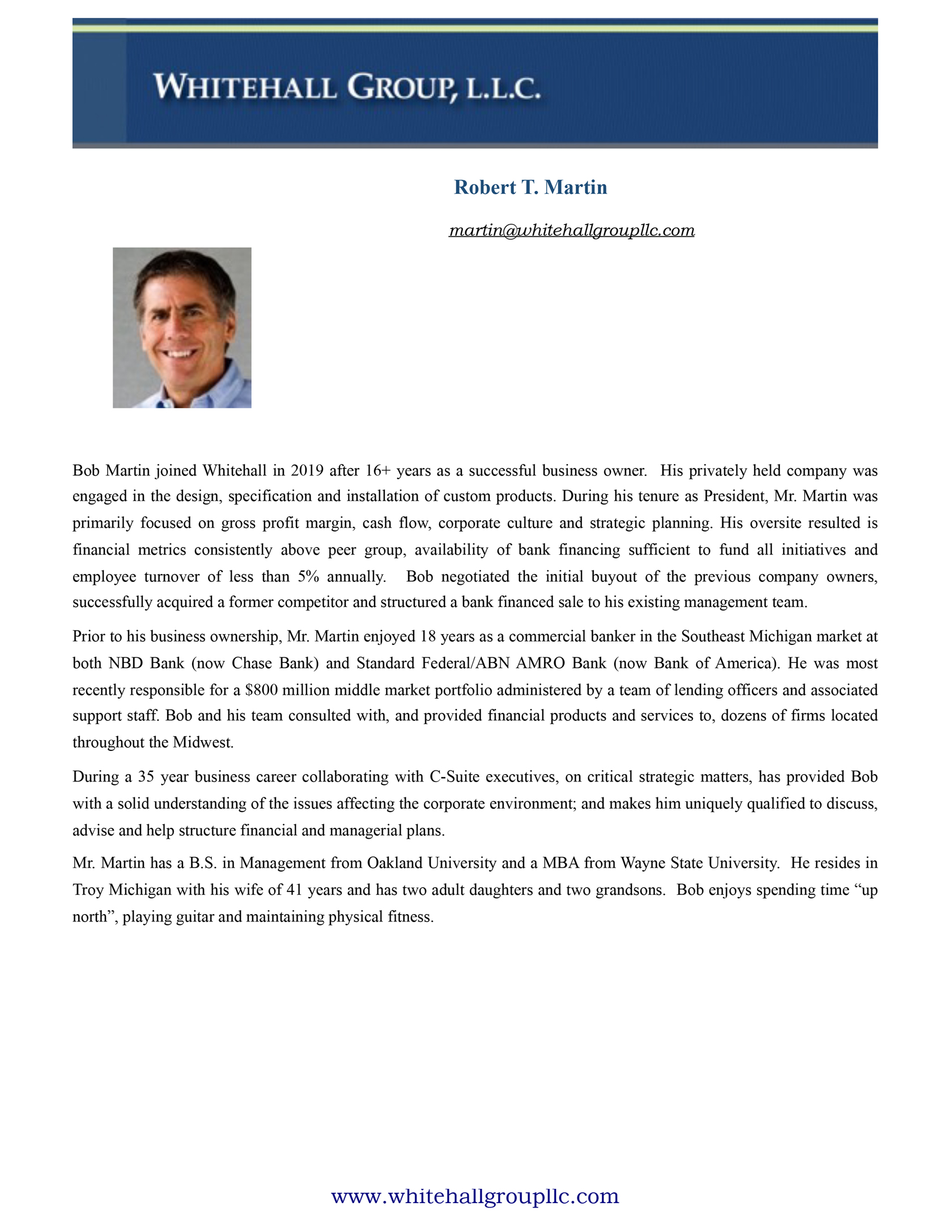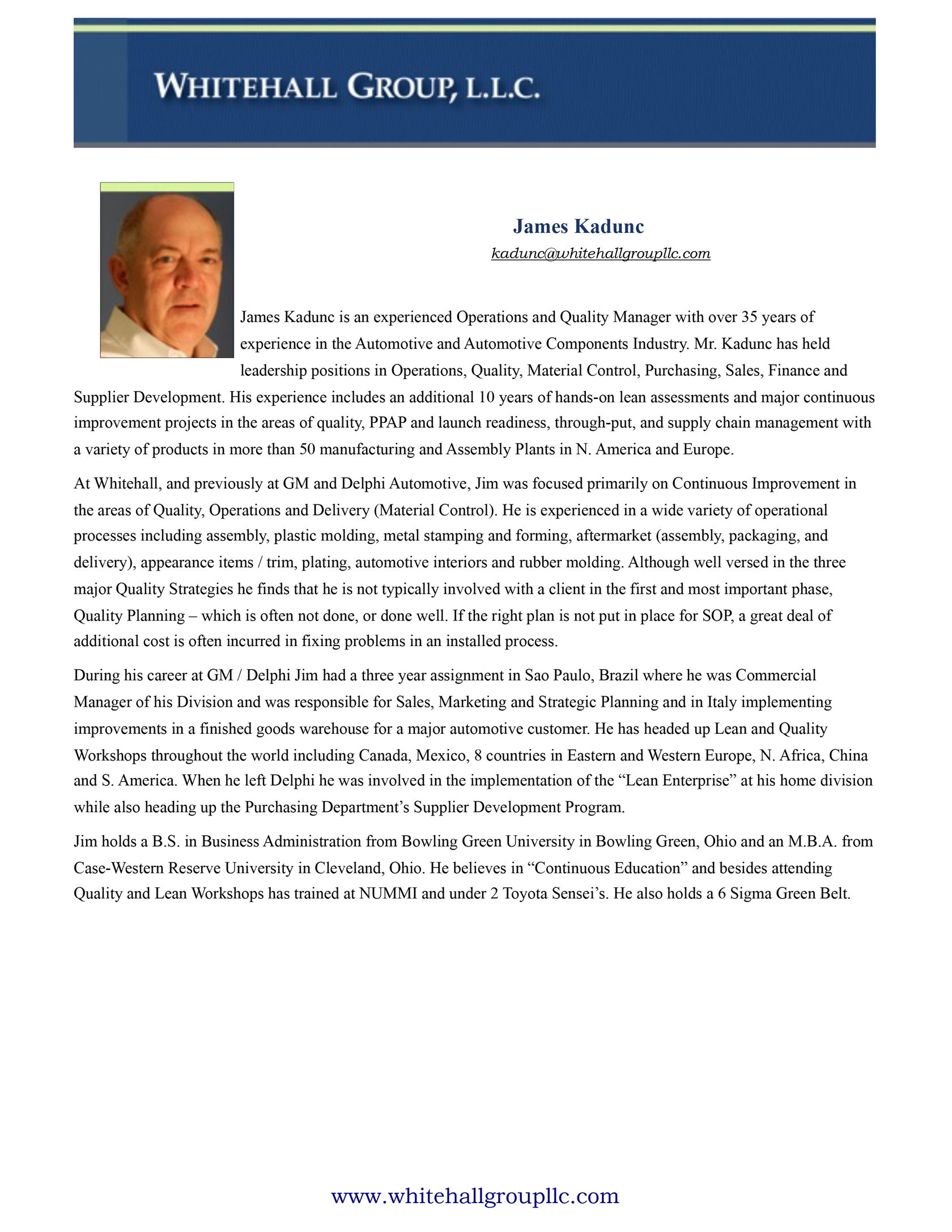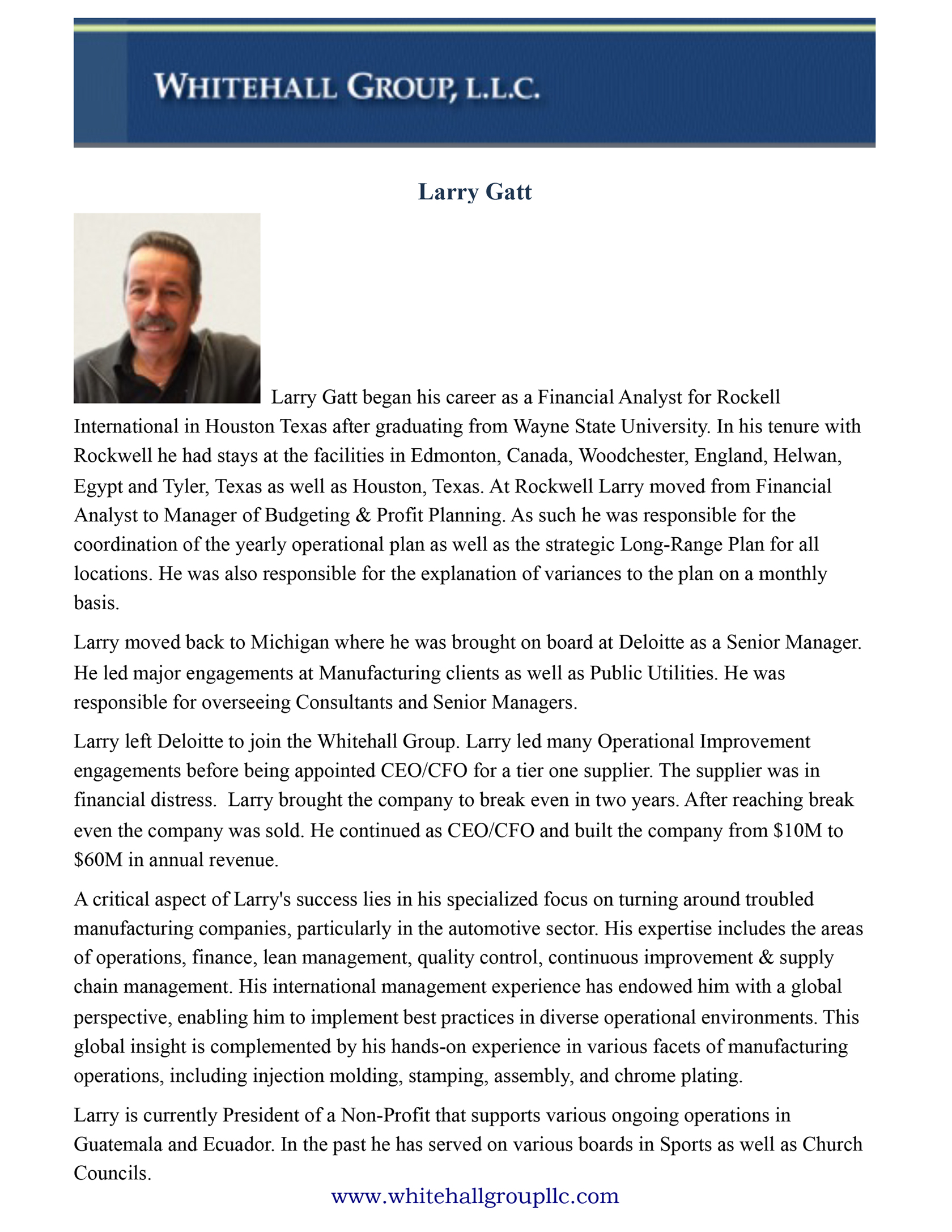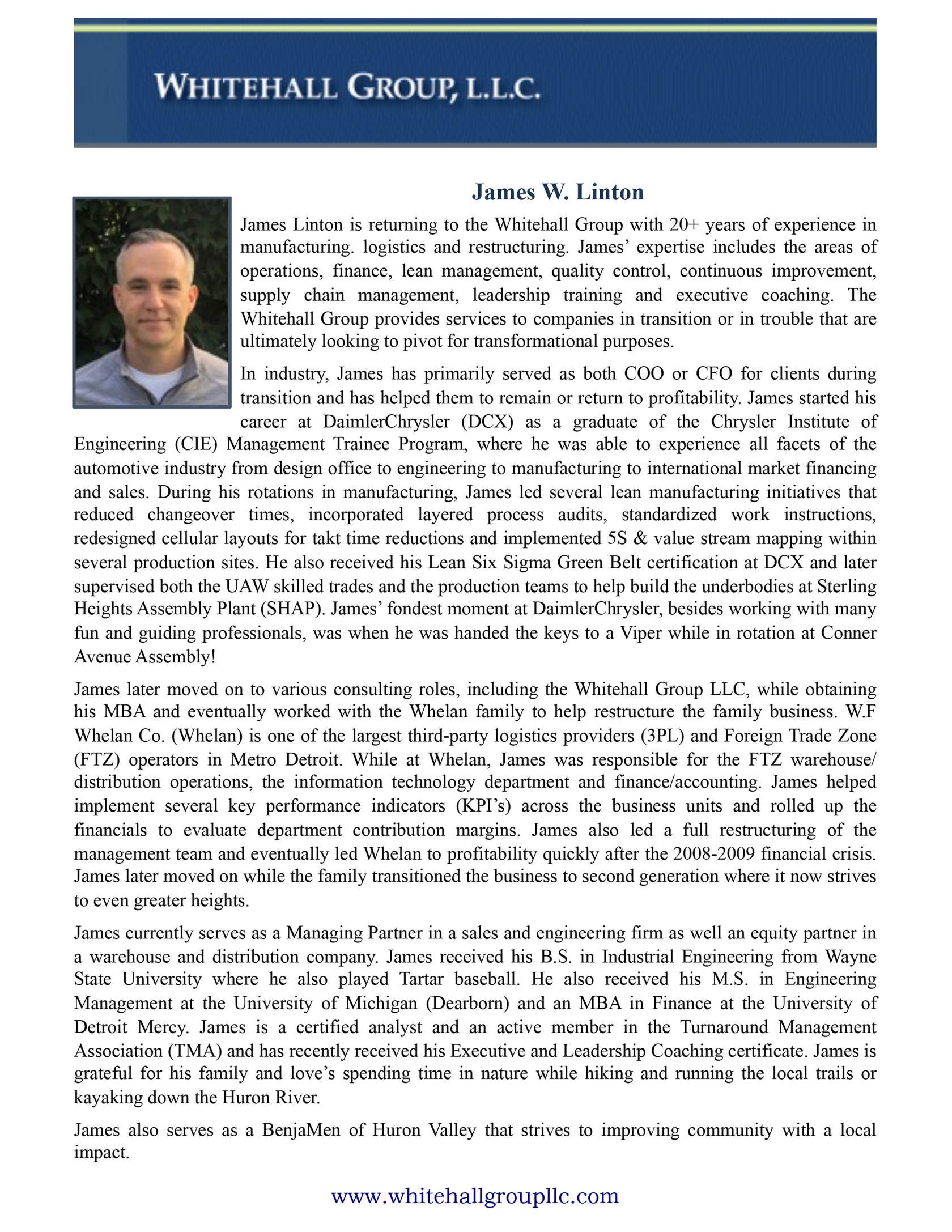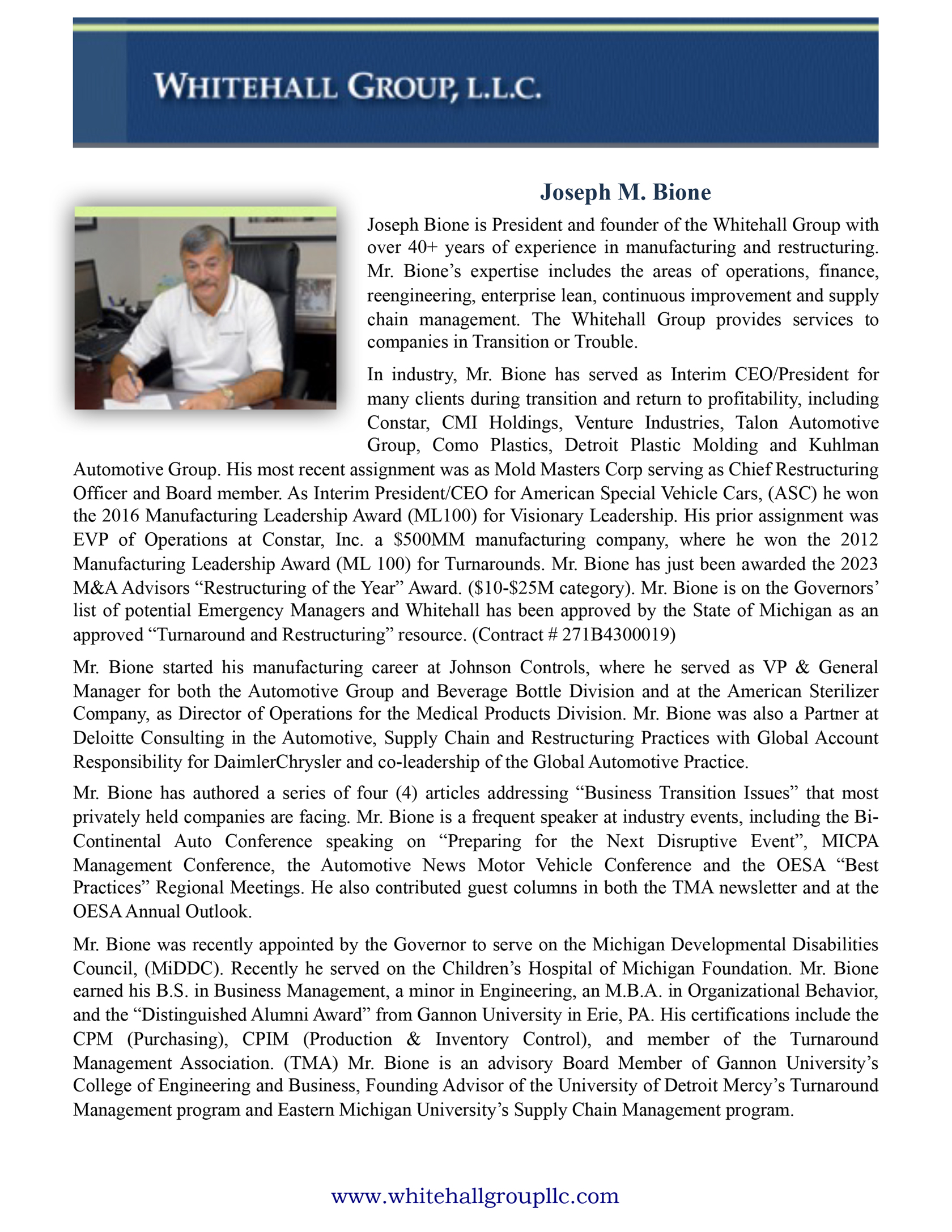The Shift from Globalization to Localization in the Auto Industry
A Major Disruptive Event

It was a pleasure and an honor to speak at the recent Detroit TMA Automotive Panel on 4/16, joining four highly respected and experienced panelists: Ryan Gross, Mike Malaga, Han Roest, and Pete Smidt. Together, we explored the current and future state of the global automotive industry.
During my portion of the panel, I focused on the disruptive events that have shaped and reshaped our industry, from its earliest days to today’s fast-changing environment. We’re not just seeing change, we’re navigating transformation.
A Legacy of Disruption and Survival
The automotive industry has always evolved in response to disruption. From the transition out of the horse-and-buggy era to mass production of vehicles, from WWII manufacturing pivots to economic crashes, companies have had to adapt or disappear.
Some of the most significant disruptors I referenced during the panel include:
- The WWII industrial shift from consumer goods to shifting to wartime production
- The 2008 global financial crisis
- The iPhone’s arrival, which rendered many established products obsolete
- The COVID-19 pandemic, which broke supply chains and rewrote the rules
- The semiconductor shortage that halted production worldwide
- The shift from internal combustion engines (ICE) to electric vehicles (EV)
- And now, the reversal of globalization in favor of more US-centric operations amid ongoing tariff wars, reshaping global production and supply chain stability
The technologies, skills, and organizational models of the industrial era have run out of steam. They are being replaced by the capabilities of the information technology revolution.
- Energy storage, electric vehicles
- Self-driving cars, solar PV
- Supercomputing and rapid technological leaps
Yet these advances come with major headwinds:
- Global supply chain issues and increasing tariffs
- Constantly evolving customer demands
- Extended product development cycles and the ongoing ICE vs. EV debate
- Inconsistent OEM release schedules and unclear product direction
We’re heading into a period where more change will occur in the next 5–10 years than the industry has seen in the past century. So, what does that mean for you and your business? Especially for the Privately Held Middle Market Suppliers!
Each Disruption Demands a Reckoning
Every disruptive moment forces a reality check. Some companies disappear. Others survive, some because they were strong, others because they were lucky. But as I said during the panel, “No one ever thinks they’re lucky.” and depending on luck is no way to build, run, or sustain a business.
Don’t Count on Luck. Build a Business That Lasts.
What separates those that thrive from those that falter? It’s not luck, its discipline, insight, and a willingness to act. That begins with looking inward, with a willingness to be honest about their business’s current state and its ability to adjust to a constantly changing environment.
Start with financial control:
- Deep-dive analysis of historical and projected (pro forma) financial performance
- Assessment of current and future business pipeline and industry trends
- Understanding your cost structure and operational competitiveness
- Evaluating restructuring efforts and initiatives to operate leaner
- Reviewing company culture and the willingness to embrace change
- Knowing your financial position and identifying required investments for disruption readiness, business transitions, or long-term sustainability
Sustainability comes down to capability:
- Can your company protect revenues and margins?
- Can it leverage current assets and reduce costs strategically?
Expand the Evaluation
Assets and operations:
- Third-party appraisals of asset base
- Comparison of operational strengths and weaknesses against best-in-class benchmarks
- Product and service lifecycle assessments with a focus on cost, quality and delivery
- Identification of true competitive advantages (product, process, or service)
Strategic partnerships:
- Assess relationships with customers, suppliers, lenders, equity partners, shareholders, labor organizations, and regulatory bodies
- Consider proximity to customers, suppliers, and competitors, cost and time of delivery
Ask yourself: Where am I in my ultimate customer’s supply chain, and in the industry as a whole?
How well does the company demonstrate the ability to improve and sustain operational efficiency and remain globally competitive?
Strong Companies Look in Every Direction
Resilient businesses maintain a 360-degree view:
- Internally, at their operational and financial capabilities, metrics, metrics and metrics
- Up, to their customers, understanding where those customers are headed and how they align with their customer’s growth and strategic direction
- Down, through their supply chain, recognizing points of vulnerability, cost, quality, delivery and technology capabilities and market directionality
- Left, to their competitors, and whether they are truly leading, lagging, or best in class
- Right, to macroeconomic forces – labor markets, banking, creditors, political and global/local dynamics
This isn’t just a strategic exercise; it’s the foundation of agility. And agility is the new currency in a global disruptive environment.
The Anatomy of a Well-Run Company
- Maintain financial control – manage cash, 13- or 26-week cash flows
- Operate based on accurate, timely daily data, metrics, metrics, metrics, metrics, metrics,
- Track performance against financial and operational goals
- Know your customers and their value to your business
- Actively manage and challenge your supply chain
- Lead with a “War Room” mindset – urgent and focused
- Foster a culture of accountability and adaptability
- Evaluate your business position regularly (quarterly, semi-annually, annually)
Ask the Hard Questions
Great companies challenge themselves with questions like:
- Are our operations best-in-class?
- Are our financial controls strong, transparent, timely, and forward-looking?
- Do we fully understand our place in the broader supply chain?
- Can we respond quickly when the market shifts? (Agility)
The most resilient organizations don’t just react during a crisis, they build a habit of preparedness. They verify performance through financial and operational metrics, internal audits, customer and supply chain evaluations, and external benchmarking.
These companies are proactive, transparent, driven by data and led by teams that prioritize with clarity and can make good decisions quickly with agility.
Final Thoughts: Agility Over Luck
We’re living in a moment where the pace of change isn’t slowing down, it’s accelerating. The shift from globalization to localization is just the latest in a series of events that will continue to challenge the global automotive industry. As many Ter 1 and Tier 2 suppliers are owned by Baby Boomers who are in their 60’s and 70’s, they are reaching an inflection point with this Global Disruption and at a critical time in their lives and the future of their company. Hard decisions must be made, and they cannot count on luck getting them through this. That’s why a key to their future decision-making lies in their ability to move quickly.
The companies that will survive and thrive are not those relying on good fortune. They are the ones that know themselves deeply, that move decisively, and that act with agility.
Let’s Talk
If you’d like to explore how to better assess your company’s readiness during this current global disruption or how to navigate today’s volatile landscape, contact us.
At Whitehall Group, for over 35 years, we have helped businesses reduce risk, strengthen their banking position, increase profitability and shareholder value and deal with Disruption and Transition planning.
Joseph Bione
Cell: 248-227-3436
LinkedIn: linkedin.com/in/josephbione
Email: bione@whitehallgroupllc.com
Website: www.whitehallgroupllc.com






